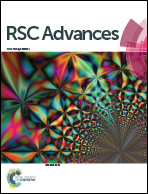A DFT study for silicene quantum dots embedded in silicane: controllable magnetism and tuneable band gap by hydrogen
Abstract
This paper presents a design for silicene quantum dots (SiQDs) embedded in silicane. The shape and size of an embedded SiQD are managed by hydrogen atoms. A first-principles method was used to evaluate the magnetism as well as the electronic and structural properties of embedded SiQDs of various shapes and sizes. The shape of the embedded SiQD determined its electronic structure as well as the dot size. Moreover, the magnetic properties of SiQDs in silicane were highly shape dependent. The triangular SiQDs were all magnetic, some small parallelogram SiQDs were nonmagnetic, and all others were antiferromagnetic; almost all hexagonal SiQDs were nonmagnetic. An unequal number of bare Si atoms at the A and B sites was identified as a critical factor for establishing magnetism in embedded SiQDs. The tip of a triangular SiQD enhanced the magnetic moment of the dot. The parallelogram SiQD with two tip atoms appeared as a magnetic needle and has potential for use in spintronic applications. SiQDs embedded in silicane can be used in the design of silicon-based nanoelectronic devices and binary logic based on nanoscale magnetism.



 Please wait while we load your content...
Please wait while we load your content...